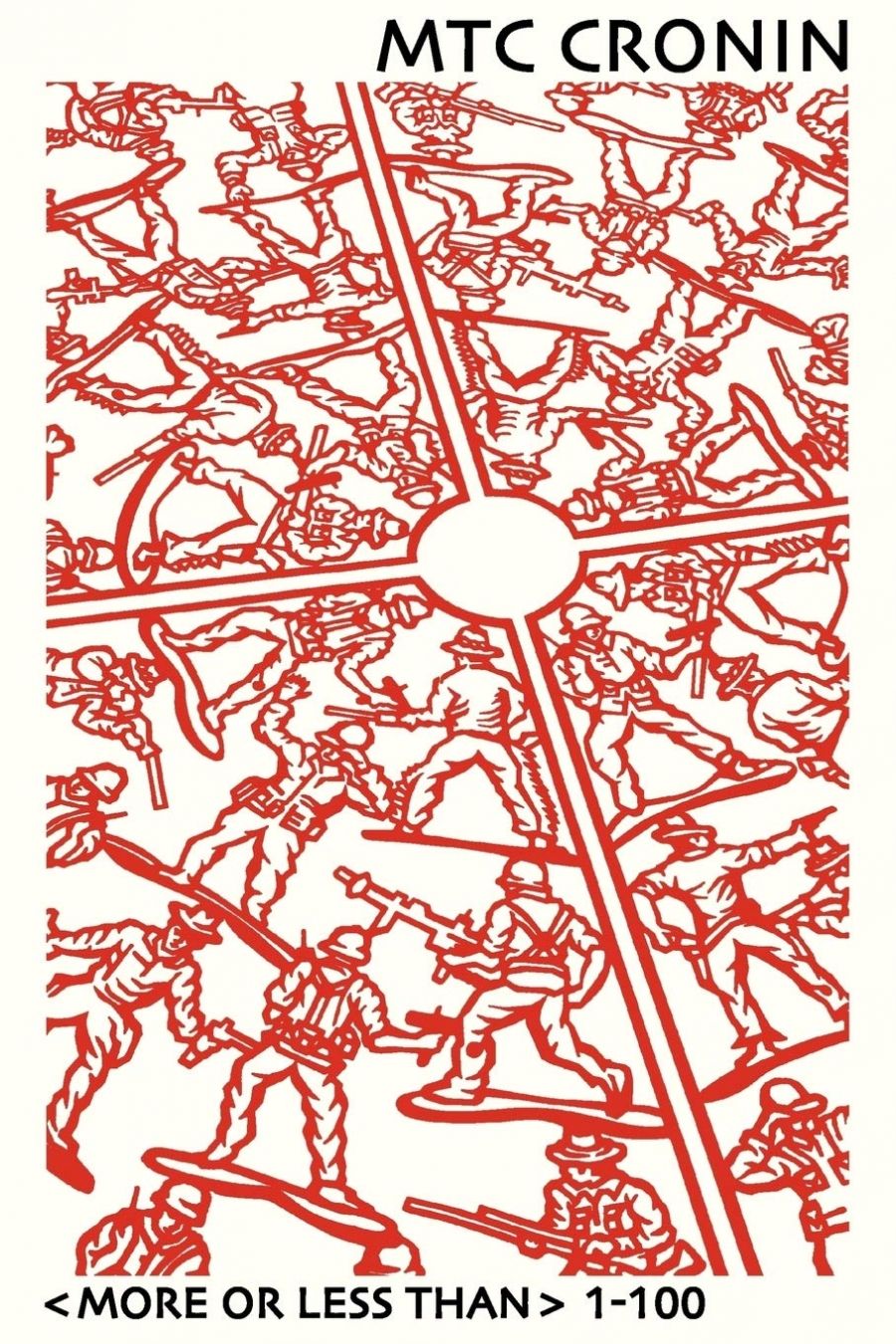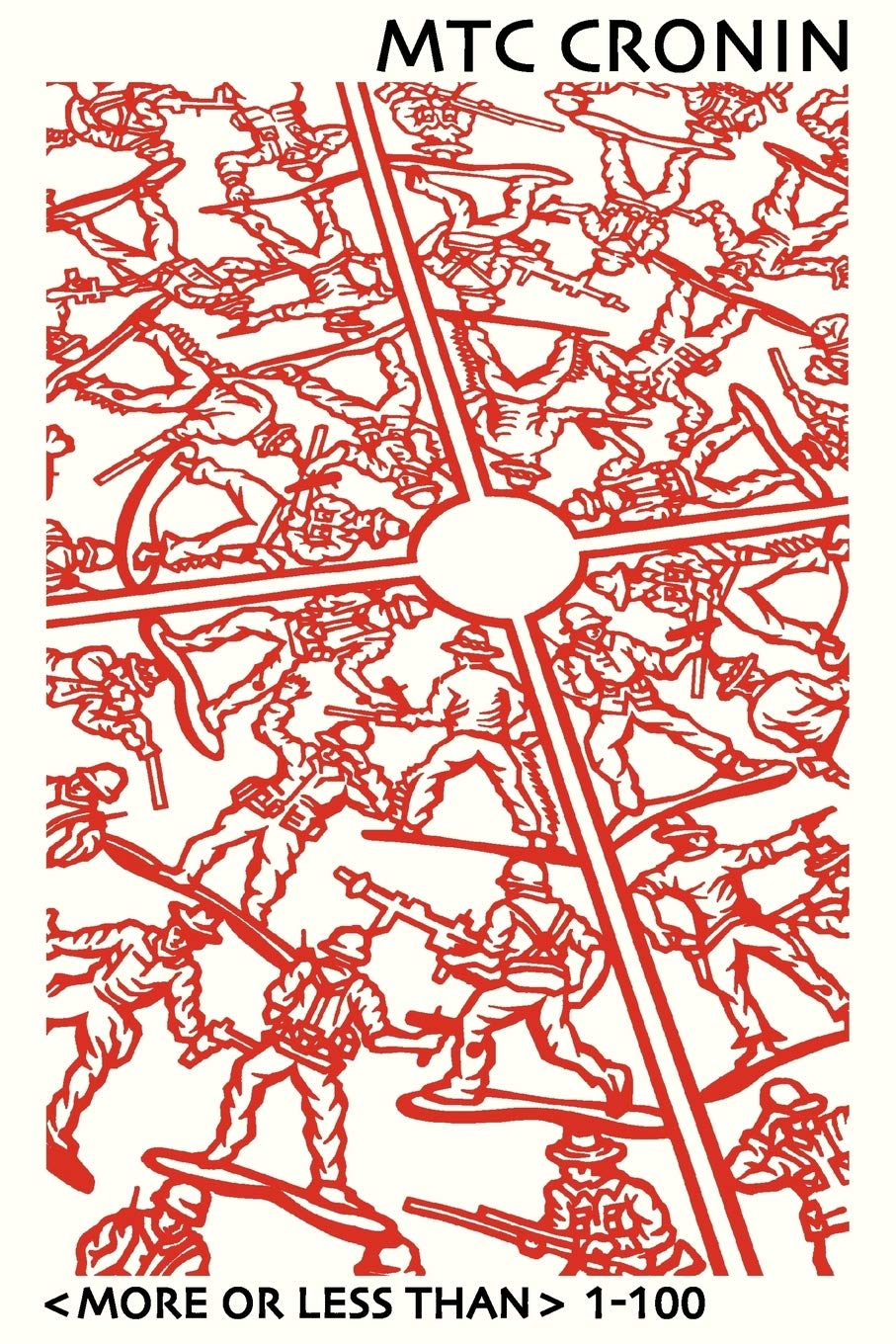
- Free Article: No
- Contents Category: Poetry
- Review Article: Yes
- Article Title: Tongue's Question
- Online Only: No
- Custom Highlight Text:
In striving to describe the overall effect of M.T.C. Cronin’s bravura performance in <More or Less Than> 1-100, it is difficult to trump Peter Porter’s ‘precipitously oracular’, quoted on the back cover. There is indeed a sense in which the poetry offers, as is the habit of oracular utterance, a distinctly slippery slope of meaning to be negotiated in following its 100 numbered poems as they increase in numerical sequence from an initial single line to fifty and then, in mirror reversal, decrease to the single line of poem 100. Not that there is anything slippery about Cronin’s technical control in this example of an exuberantly free verse poet embracing the otherness of formal, even arbitrary, patterning. She is sufficiently confident that, in a work with so categorical a design of beginning and ending, she can write mockingly:
- Book 1 Title: More or Less Than
- Book 1 Subtitle: 1-100
- Book 1 Biblio: Shearsman Books, $24.95 pb, 136 pp
- Book 1 Cover Small (400 x 600):

- Book 1 Cover (800 x 1200):

the whole point
is to head somewhere?
is to go somewhere?
is to get somewhere?
the curse of between
not being able to be the end they see
not being able ever to begin as they have begun (43)
Or again, in 52, ‘I talk along / as if on wheels’. lf the image is self-parodic, the idea of motion that it carries is central to the manner in which this poetry entices the reader to follow its flow. Usage has rubbed the edges off the concept of ‘stream of consciousness’ until it has become a debased coinage for mere randomness, until we too often forget how its greatest practitioner, James Joyce, refined it as a medium for conveying the multifariousness of the mind in action, full of digressions, subtle links, sudden distractions, in flux between rational thought, sensation, association, memory, emotion, reverie, dramatisation of a life narrative, verbal play. It is in such terms that Cronin’s work asks to be read, as the opening three poems indicate:
not simply the stream but they who thought of following (1)
and not just running water - how concerned, sometimes,
a group of people with the movements of clouds (2)‘follow me’ means three, the speaker
a page of water and they, addressed, wavering,
as the third beckons as well as it can, hidden (3)
In this elegantly presented edition, each poem is not in close proximity as when quoted here but cut out on its separate page. This makes for a different balance between continuity and discontinuity, whose contested relationship is one of the many ‘tongue’s questions’ stated by Cronin. Questioning is endemic: of love that can be sieved ‘for its bright bits’ and the ‘peacock brutality of desire’ of violence (‘a pig with a broken spine hurts like eating my own tongue’); of time (‘I can only live in moments / periodically you do your whole life at once / at times I wish you would stop dying’); of death and of language. It is the fate of the enigmatic ‘they’ of 28:
they are certain there is an answer
and so continue passing through
tall grasses, the ends of the earth, the earth itself
fields of daffodils, desire
they eat meat and know famine
from books they return, again and again
to the body and are unconsoled
they sit beneath trees
and take firm hold of the fruit
from end to end of the fields
drop their crutches
wonderful!
. . . . . . . . . . . . . . .
they hang their teeth about their necks
and silent, live in the moment
what if tomorrow they are questioning again?
what of it?
The grotesquerie of the teeth hung around necks is rooted in the all-too-mundane reality of detachable dentures. The startling effect arises partly from a juxtaposition with the biblical image of the lame freed from their crutches and partly from the displacement of the dentures from their familiar location in the bedside water glass. ‘This’ does not necessarily go with ‘that’ in Cronin’s poetry, which often surprises by apparent incongruities in images or in the elements composing her recurrent lists. Here, the modal shift into metaphor and myth surprises, just as when, in 43, the dry generalities of the passage quoted earlier change to the specific and physical: ‘they had ceilings of plaster pressed / with every imaginable pattern and design.’
There are, however, many pleasures of continuity in the linguistic threads linking these poems. These often involve the transit of a single word from one poem into the fabric of the next as when one ‘hear’ in 67 transmutes into ‘heard’ and ‘hearing’ in 68; the ‘your breath’ of 94 becomes ‘we breathe’ in 95; or ‘cretonne’ (38) leads into ‘not simply a cloth’ (39). Sometimes the link is comical as when the closing question of 22 gets an unexpected answer as 23 begins. Mostly, however, the linking is via an image such as that of the filled dish that traces its way between poems, most notably in the return of water in 100. It is a sequence Cronin has given us, and it is a richly rewarding, if sometimes perplexing, one.


Comments powered by CComment